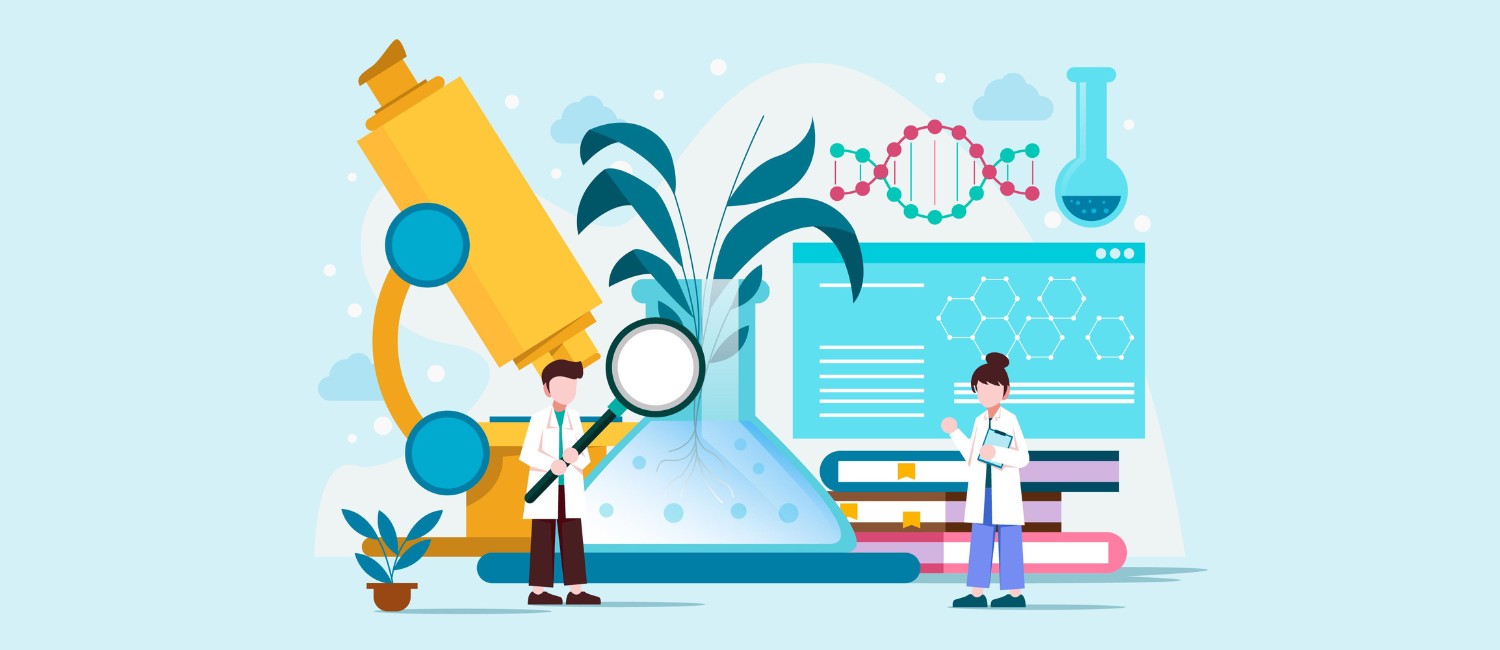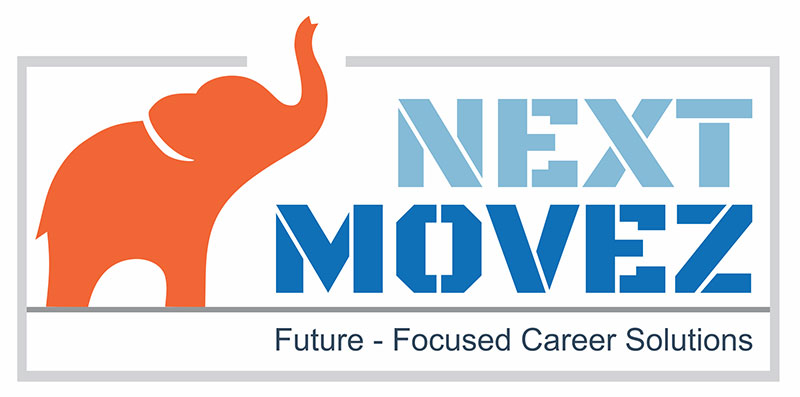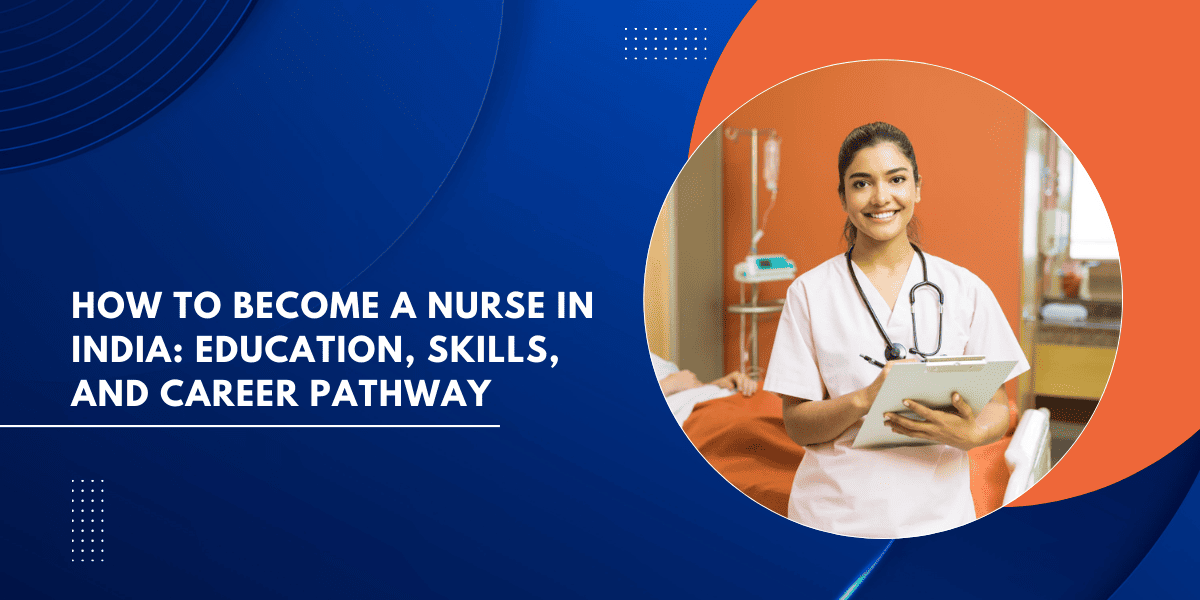Hey everyone!
Are you thinking of a career that mixes healthcare, research, and science in one exciting role? What if I told you that you can build a stable and rewarding future by becoming a biomedical scientist? Learning how to become a biomedical scientist might just lead you to a career that’s respected, well-paid, and full of purpose.
And the best part is—you don’t have to be a doctor to work in the medical field. You don’t need to go through NEET or MBBS for it. If you’re someone who’s curious about human biology and loves lab work, this might be your calling.
Take, for instance, Neha, who started off studying pharmacy because it seemed like a safe career choice. During her internship, however, she found herself drawn to the lab work and the process of disease diagnosis more than the dispensing side of medicine. Curious about how illnesses were detected at the cellular level, she decided to switch tracks. She enrolled in a biomedical science program, took up a research assistantship in clinical microbiology, and later pursued her bachelor’s in the same field. Today, she works at a leading hospital in Bengaluru, playing a key role in diagnosing rare infections.
What worked in Neha’s favor was her ability to recognize her true interest early on and take action. That’s why I believe clarity is everything. When you know where your curiosity lies—whether it’s research, lab diagnostics, or medical innovation—you’ll find your path in biomedical science much easier to define.

Introduction to the Career
In my opinion, this career that continues to quietly shape medical breakthroughs and patient care, it’s biomedical science.
Biomedical scientists are the unsung heroes working behind the scenes in diagnostics, research labs, and hospitals. They don’t just run tests and diagnosis, they uncover what’s really happening inside the human body, often before doctors do.
In India, the demand for biomedical scientists is slowly catching up with global trends. Hospitals, pharmaceutical companies, and diagnostic labs are constantly looking for professionals who can work with high-tech equipment and interpret lab results accurately.
According to the Bureau of Labor Statistics (US), the employment of medical laboratory scientists and technologists (including biomedical scientists) is projected to grow 7% from 2021 to 2031. That means thousands of new job openings each year—and India is no exception. We’re seeing increasing investment in public health, diagnostics, and biotechnology, all of which need biomedical science experts.
If you’re a student or a parent researching career options after Class 12 PCB (Physics, Chemistry, & Biology), let me assure you, a career in biomedical science can put you at the center of healthcare advancements.
What’s the Future Like for Biomedical Scientists?
India’s biomedical science sector is entering an exciting phase. With increased investments in healthcare, public health infrastructure, and medical research, the demand for skilled biomedical scientists is rising steadily.
According to the BW Healthcare World, India’s healthcare spending is anticipated to rise from 3.3% to 5% of its GDP by 2030, reflecting a substantial commitment to enhancing public health infrastructure and services.
From working on breakthrough treatments to running diagnostic labs that support early disease detection, biomedical scientists are becoming a core part of how we tackle health challenges in real time.
If you’re exploring how to become a biomedical scientist, you’re not just choosing a profession, it’s a career that will stay relevant for decades. So yes, the career outlook is promising and with the rise of precision medicine, biotechnology startups, and AI-assisted diagnostics, biomedical scientists are now needed more than ever.
Key Responsibilities
In my experience, many students are drawn to the title, but don’t fully know what the day-to-day work involves. Once you understand that, you’ll get a clearer picture of how to become a biomedical scientist and what path suits you best.
There are several roles you can take on as you grow in this field. Each comes with its own focus and specialization.
Here’s how it generally progresses:
Clinical Research Associate (CRA)
- Works on clinical trials and ensures they are conducted according to protocols.
- Coordinates with hospitals and research institutions for subject recruitment and trial execution.
- Helps collect data and analyze the safety and effectiveness of treatments.
Biomedical Scientist (Core Role)
- Carries out complex tests to diagnose diseases—such as blood disorders, infections, or genetic conditions.
- Interprets test results and collaborates with doctors and healthcare staff.
- Develops new testing procedures and evaluates the effectiveness of treatments or drugs.
Medical Laboratory Manager
- Oversees the daily operations of a medical laboratory.
- Manages lab staff, ensures compliance with healthcare regulations, and maintains quality standards.
- Prepares budgets and collaborates with hospital administrators.
Research Scientist in Biotechnology/Pharma
- Works in R&D divisions of pharmaceutical or biotech firms.
- Studies diseases, develops diagnostic tools, or works on vaccines and treatment innovation.
- Publishes research findings and contributes to medical journals or patents.
If you’re genuinely curious about how to become a biomedical scientist, start by identifying where your interests lie—for example, in research, clinical work, or diagnostics. That will help you map out a much clearer path.
Work Environment
From my experience, I’ve noticed that biomedical scientists enjoy a dynamic and impactful work life. The environment is both structured and stimulating—whether you’re analyzing patient samples in a hospital lab, working on vaccine development in a pharma research facility, or diving into cell cultures in a university setting.
Those asking about how to become a biomedical scientist also want to know the benefits and what this job entails. Well, the field offers job satisfaction, ongoing learning, and a real-world impact that’s hard to match.
Biomedical scientists typically work in:
- Hospitals and diagnostic labs
- Pharmaceutical and biotechnology companies
- Academic and clinical research institutions
- Public health organizations and government labs
Their daily work involves:
- Collaborating with healthcare professionals, researchers, and lab technicians
- Following rigorous safety and ethical protocols
- Using advanced lab technologies like spectrometers, centrifuges, PCR machines, and microscopes
- Keeping detailed records and analyzing complex biological data
Educational Path and Entrance Exams for a Career in Biomedical Science:
Level: | Course Name | Duration | Entrance Exams | Eligibility | Popular Universities/Institutes |
UG | B.Sc. Biomedical Science | 3 years | NEET (UG), CUET (UG), State CETs, MET | 10+2 with PCB | Delhi University, Christ University, Amity University, BHU |
UG | B.Sc. Medical Laboratory Technology | 3 years | NEET (UG), State CETs | 10+2 with PCB | Manipal Academy of Higher Education, SRM University, AIIMS |
UG | B.Sc. Clinical Research | 3 years | CUET (UG), State CETs | 10+2 with PCB | Bangalore University, IGNOU, Amity University |
UG | B.Sc. Microbiology | 3 years | CUET (UG), State CETs | 10+2 with PCB | University of Mumbai, Calcutta University, BHU |
UG | B.Sc. Genetics | 3 years | CUET (UG), State CETs | 10+2 with PCB | Delhi University, JNU, University of Hyderabad |
PG | M.Sc. Biomedical Science | 2 years | JAM, CUET (PG), AIIMS MSc Entrance | UG in relevant science stream | JNU, BHU, University of Mumbai, Calcutta University |
PG | M.Sc. Medical Laboratory Technology | 2 years | CUET (PG), AIIMS MSc Entrance | B.Sc. MLT or equivalent | Manipal University, AIIMS, Amity University |
PG | M.Sc. Clinical Research | 2 years | CUET (PG) | UG in Life Sciences | University of Madras, Christ University, Jamia Hamdard |
PG | M.Sc. Microbiology | 2 years | JAM, CUET (PG) | UG in relevant discipline | Delhi University, Mumbai University, Calcutta University |
PG | M.Sc. Genetics | 2 years | JAM, CUET (PG) | UG in relevant discipline | JNU, University of Hyderabad, BHU |
PG | M.Tech / M.E. in Biotechnology | 2 years | GATE, BITS Pilani Higher Degree Test | UG in Science/Engineering | IITs, BITS Pilani |
Doctoral | Ph.D. Biomedical Science | 3–5 years | ICMR-JRF, Institute-specific | PG in Biomedical or related field | JNU, BHU, IISc Bangalore, TIFR |
Doctoral | Ph.D. Microbiology | 3–5 years | ICMR-JRF, Institute-specific | PG in Microbiology or related field | AIIMS, Delhi University, BHU |
Doctoral | Ph.D. Genetics | 3–5 years | ICMR-JRF, Institute-specific | PG in Genetics or relevant field | JNU, University of Hyderabad, IISc Bangalore |
Notes for Students:
- For clinical routes (like MBBS to MD in Pathology/Microbiology), NEET UG & PG are essential.
- For research and academic careers, exams like GATE, JAM, and ICMR-JRF are ideal.
- Many private and deemed universities have their own entrance tests or direct admission based on merit.
Not sure how to guide your child into biomedical science?
Necessary Soft Skills & Technical Abilities
If you’re wondering how to become a biomedical scientist and truly thrive, it’s about more than just excelling in biology or lab work. From my experience, success in this field hinges on blending technical expertise with strong soft skills. Many bright students struggle—not due to lack of knowledge, but because they can’t communicate findings, collaborate effectively, or think critically under pressure. In the lab, you’ll need to plan carefully, work with diverse teams, and document precisely. Whether you’re interacting with doctors, researchers, or pharma professionals, presenting results clearly is just as vital as generating them.
Soft Skills:
- Attention to Detail: A minor error in a test result or data entry can have serious consequences. Precision is everything.
- Teamwork: Labs are highly collaborative. You’ll often work with pathologists, physicians, and research coordinators.
- Time Management: You’ll be juggling multiple tasks—tests, sample prep, documentation—often under time constraints.
- Critical Thinking: You must assess outcomes logically, identify anomalies, and troubleshoot results.
- Ethical Judgment: In this field, patient data and test results are sensitive. You must maintain the highest ethical standards.
Technical Skills:
If you’re thinking how to become biomedical scientist and stand out, here are the core technical skills you need to master:
- Laboratory Techniques: Microbiological culturing, PCR, spectrophotometry, ELISA, and histology techniques.
- Data Analysis Tools: Basic proficiency in Excel and statistical software like SPSS, R, or GraphPad Prism.
- Scientific Writing: You’ll need to write reports, publish research, and document findings meticulously.
- Medical Laboratory Equipment: Operating and maintaining centrifuges, microscopes, blood analyzers, etc.
- Clinical Testing Procedures: Understanding pathology, hematology, molecular biology, and immunology protocols.
- Quality Control & Assurance: Knowledge of NABL or ISO standards for lab work and reporting.
Career Progression and Growth Opportunities
Biomedical science is a hidden gem—offering diverse career paths and incredible growth potential across research, healthcare, and industry. I’ve seen professionals start as junior lab assistants and work their way up to research leads, clinical managers, or even join international health projects.
In fact, if you want to know how to become a biomedical scientist and go beyond routine lab work, you can explore roles in clinical trials, biotechnology research, forensic science, or even regulatory affairs in pharma. Some even pursue PhDs and become subject experts or principal investigators in global health research.
Career Levels in Biomedical Science
From my own observations and what I’ve seen among peers in the field, biomedical science has a well-defined career ladder. And unlike many jobs where growth slows down after a point, this field keeps expanding with research advancements and healthcare innovations.
Here’s how a career in biomedical science usually progresses:
- Entry-Level: Junior Biomedical Scientist, Lab Technician, Research Assistant
- Mid-Level: Biomedical Scientist, Clinical Research Coordinator, Senior Lab Technologist
- Senior-Level: Lead Biomedical Scientist, Laboratory Manager, Research Scientist
- Specialized Roles: Immunologist, Virologist, Genetic Technologist, Molecular Biologist, Clinical Trials Expert
- Entrepreneurship & Consulting: Many professionals with experience move into consultancy roles for hospitals or pharma firms, or even set up diagnostic labs and research firms
Whether you choose to work in pathology labs, research centers, or pharmaceutical companies, there’s always room to grow—provided you stay updated with certifications and technology.
Salary Expectations & ROI-ROT
If you’ve been asking how to become a biomedical scientist and whether it pays off well, I’ll break it down for you with real numbers.
Return on Investment (ROI):
Biomedical science is a strong career investment, especially as demand is rising due to healthcare expansion, clinical trials, and biotechnological innovation.
- Education Costs: A bachelor’s degree (like B.Sc. in Biomedical Science) typically costs around ₹2-6 lakh. If you go for a master’s or specialization, total costs can go up to ₹8–20 lakh.
- Salary & Earnings Potential: Entry-level salaries range from ₹3-6 LPA. Within 5–8 years, skilled professionals can earn ₹12–25 LPA, especially in private hospitals, pharma companies, and international labs.
Return on Time (ROT):
- Education Duration: 3 years for a bachelor’s, plus 1–2 years for postgrad (optional, but recommended).
- Break-even Point: Most professionals recover their investment within 3–5 years of working.
- Fast-Track Options: Short-term certifications in clinical trials, molecular diagnostics, or bioinformatics can boost your employability even without a master’s degree.
And let me be honest—this isn’t a get-rich-quick kind of job. But the stability, growth, and respect the role commands definitely make it worthwhile.
Future Prospects: The Next 20–30 Years
I believe that biomedical science is one of the few careers that will only become more vital in the future. If you’re serious about how to become a biomedical scientist, this is a good time to explore this field.
Over the next two to three decades, the field is set to be transformed by genetic engineering, personalized medicine, AI-based diagnostics, and wearable health technologies. New roles will emerge in fields like synthetic biology, CRISPR gene editing, and biopharma R&D.
With the rise of pandemics, antibiotic resistance, and aging populations, the demand for skilled biomedical scientists will skyrocket. Government research labs, international health organizations, and private biotech firms will be looking for people who can work on cutting-edge solutions.
So, if you’ve ever dreamt of working on real-world medical problems or contributing to life-saving research, this path might be your calling.

Final Thoughts
Thinking about a career as a biomedical scientist? It’s a meaningful and future-ready path. From working in cutting-edge labs to contributing to research that can improve lives, this field has a lot to offer. Whether you’re interested in diagnosing diseases, developing new treatments, or working in medical research, there’s a place for you in biomedical science.
If you’re curious about how the human body works, enjoy working in labs, and want to make a real difference in healthcare, then a career in biomedical science might be the right path for you.
I hope this guide gave you some clarity about becoming a biomedical scientist. If you have any questions or need help deciding your next step, feel free to ask—I’d be happy to help!






















